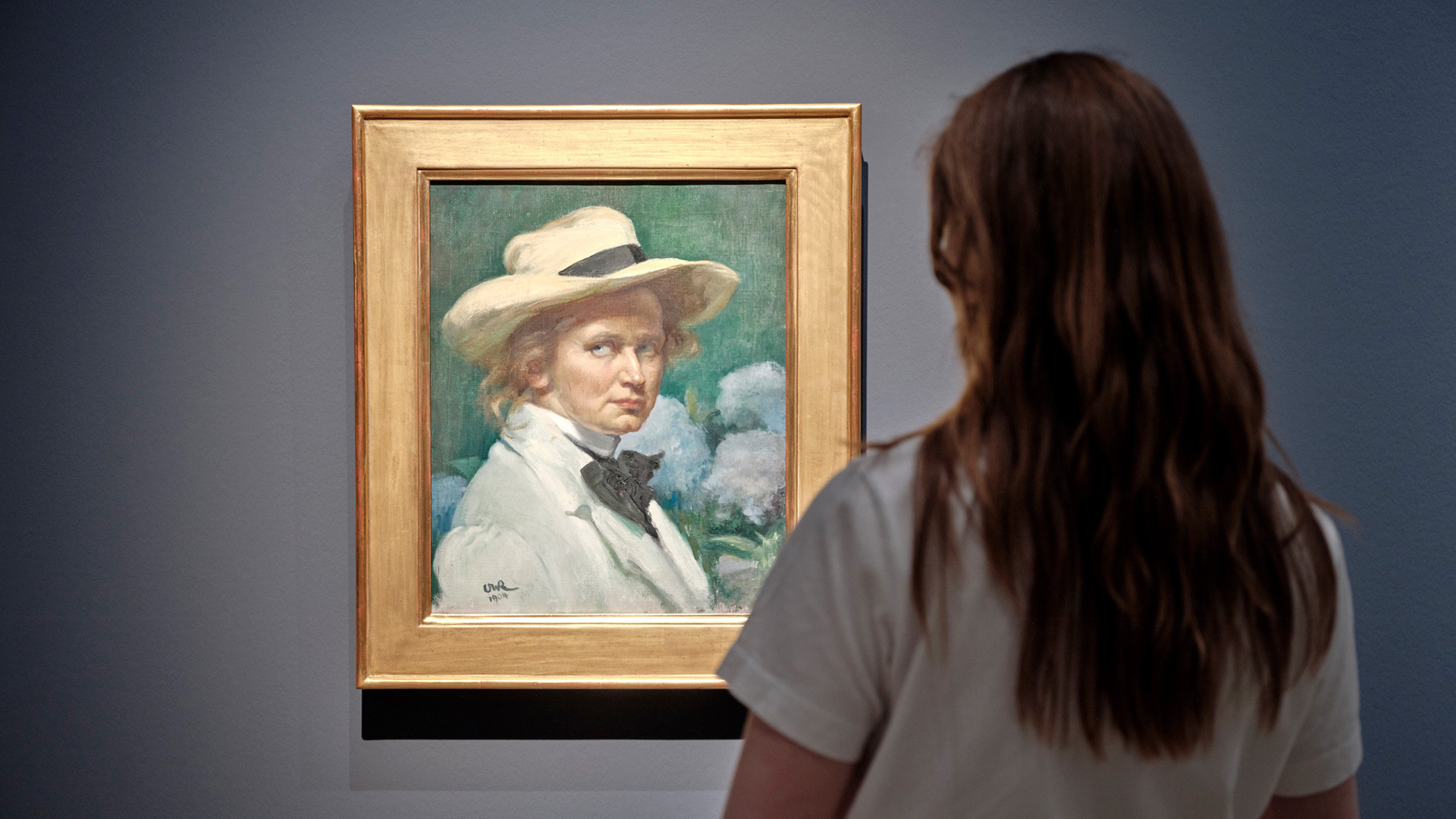About the Exhibition
She was one of the outstanding women artists of her time—the German-Swiss painter Ottilie W. Roederstein. Self-determined and emancipated, she asserted her place in the art world. Her multifaceted oeuvre reflects various modernist trends.
In summer 2022 the Städel Museum presented a comprehensive retrospective featuring 75 paintings and drawings that provided an overview of the artistic development of a painter distinguished by her stylistic versatility. From 1891 onwards, after training in Zurich, Berlin, and Paris, Roederstein lived in Frankfurt am Main. In 1909, she and her partner, the gynaecologist Elisabeth H. Winterhalter, settled in the neighbouring town of Hofheim am Taunus. As a free-lance portraitist, Roederstein was firmly established in the male-dominated art world and self-confidently disregarded the prevailing social norms of her time. Her works were shown in numerous exhibitions in Germany and abroad—from Frankfurt, Zurich, and Paris to London and Chicago—gaining her wide recognition among her contemporaries. Yet despite her extensive exhibition activities and onetime renown, the painter has all but fallen into oblivion.
Roederstein’s work is closely intertwined with the history of the Städel Museum and the city of Frankfurt. Her studio in the Städel School was just a few steps away from the museum, which she visited regularly, its collection being an important source of inspiration for her art. Her own works already entered the Städel holdings during her lifetime. In 1902, the museum acquired its first work ever by a contemporary female artist: Roederstein’s painting ‘Old Woman Reading’. The exhibition accordingly built on the Städel Museum collection which, meanwhile comprising 28 works by the artist, represents one of the most important Roederstein holdings apart from those of the Stadtmuseum Hofheim am Taunus and the Kunsthaus Zürich.
The exhibition was realized in cooperation with the Kunsthaus Zürich.
Curators: Dr. Alexander Eiling (Head of Modern Art, Städel Museum), Eva-Maria Höllerer (Research Assistant, Modern Art, Städel Museum)
Archive: Dr. Iris Schmeisser (Head of Provenance Research and the Historical Archive, Städel Museum)
Film

The Roederstein-Jughenn Archive
In 2019, the Städel Museum received the generous private donation of the extensive legacy left behind by the artist Ottilie W. Roederstein. These exceptional archival holdings are now being cared for and processed at the museum. The written and pictorial material dates from throughout the artist’s biography and career.
On the occasion of the exhibition, selected documents and photographs from the Städel Museum’s Roederstein-Jughenn Archive offered initial insights into these important holdings.
Sponsors & Partners
Sponsored by
Gemeinnützige Kulturfonds Frankfurt RheinMain GmbH
With support from
Friede Springer Stiftung, Ernst Max von Grunelius Stiftung, Damengesellschaft des Städelschen Museums-Vereins
Media partner
Frankfurter Rundschau
Cultural partner
hr2-kultur